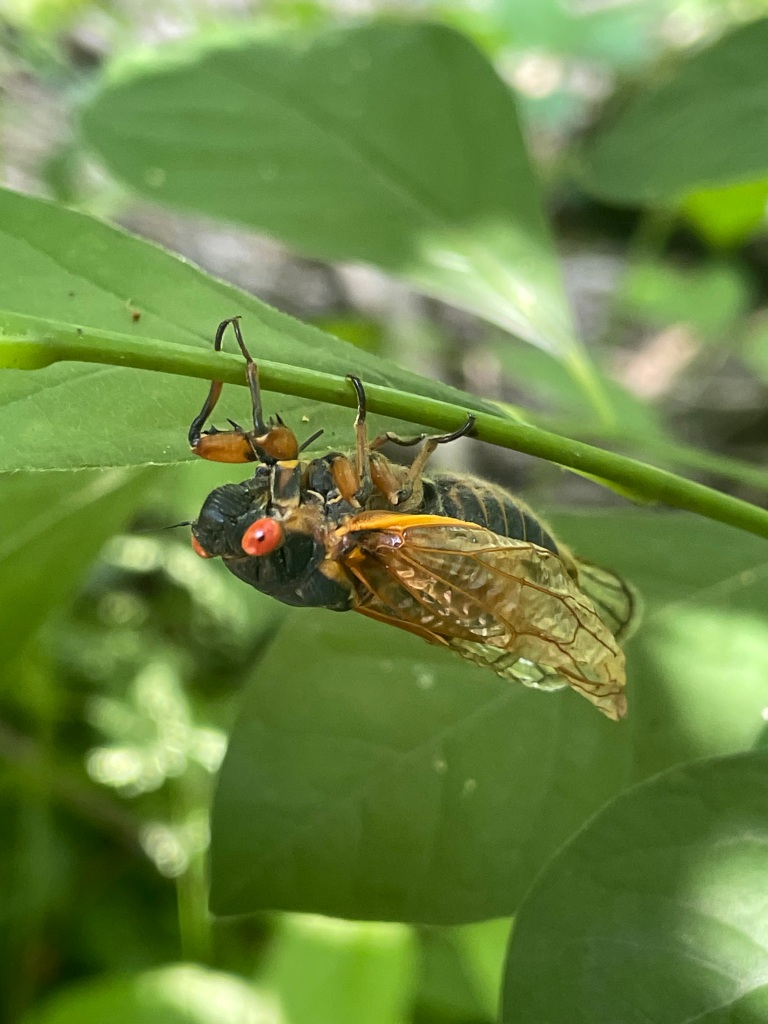This afternoon I set out into the 90-degree heat to look for birds in the Institute Woods, whose paths Albert Einstein walked during his Princeton years. The woods, named for the adjacent Institute for Advanced Study, are ordinarily a place for a quiet, contemplative ramble on the trails through the trees, with birds chirping and flitting about.
But this is no ordinary time. The Brood X cicadas emerged from below ground a few weeks ago to engage in a once-every-17-years bacchanal in the treetops. These red-eyed insects cavorting today are the grandchildren of those who emerged in 1970 during Princeton University’s commencement exercises. They were the muses for Bob Dylan, who received an honorary degree from Princeton while the cicadas roared. He later wrote “the Day of the Locusts” about the experience.

I saw and heard few birds during my walk today, which was overwhelmed by the droning of the cicadas. I’m accustomed to the usual buzzing noise the annually emerging cicadas make during the summer, but the sheer numbers of Brood X looking for love created a high-pitched, almost metallic din. Their mating cry is incessant, at a volume that approaches or even exceeds 100 decibels, from what I’ve read.
The only other natural word experience I’ve had that made a similar racket was from the sandhill cranes congregating on the Platte River in central Nebraska many years ago. But that noise wasn’t as loud or all-encompassing as the clamor of Brood X.

Many people are repulsed by the cicadas. With their bulging red eyes and their propensity land on anyone who wanders into their way, the cicadas can be creepy. One landed on my thumb as I was holding a paper map just after I’d passed the trailhead today, and I instinctively jumped back and shook the bug off. Another landed on my shoulder a minute later, and I initially panicked before calmly flicking it away with my hand.
Even with a high “ew!” factor, the cyclical emergence of the cicadas was a wonder to behold. I am grateful that I was able to experience the phenomenon, which I believe is a particularly apt occurrence for those of us humans living in 2021.

We are emerging from an underground of a sort, having been locked down, quarantined, isolated and otherwise cut off from our families and friends because of COVID-19 restrictions for the past year-plus.
The cicadas are proof of that life renews itself, even after a long period of darkness. They are a sign of resilience through the ages. I hope to see their offspring in 2038.

Beautiful essay, Dan! Now that we are all emerging again, I do feel like singing from the treetops. Our song will surely be more melodic than the cicadas’ din!
LikeLike
You obviously haven’t heard me sing.
LikeLike